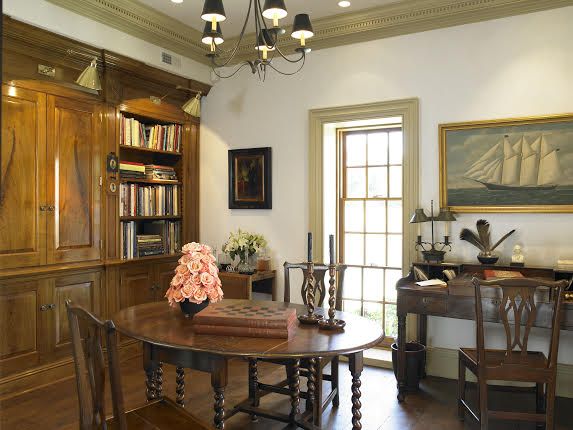Journal

August 3, 2014
18th Century Millwork
In Design and Build a Great 18th Century Room author Jeff Knudsen writes, “In this age of specialization, disciplines are often disconnected; the designer designs, the cabinet maker builds, and the installer installs. As a result, continuity is lost and quality often suffers.” In other words, the quality of the millwork can easily be lost if the designer, the cabinet maker, and the installer are not of the same caliber of discipline and education. When the designer, cabinet maker, and installer all work with different levels of understanding of the classical language, the quality of mill work suffers from the varying disciplines. The fabricators and installers must understand the quality of the millwork at the same level as the designer. High-End millwork requires oversight by an educated designer in collaboration with a cabinet maker and Installer who also understand the specialization and discipline of the millwork. Continuity is best achieved when the project’s millwork is crafted by the designer’s mill shop and installed by the designer’s installation team. All three facets of the project; the designer, the cabinet maker, and the installer, must understand the discipline and specialization of the classical language and how it is applied within the millwork. Ultimately, one can hire the best architect and the best designer in the world, but if the cabinet maker and installer do not understand the language of the architect and designer, then the quality of the project can be lost. However, when this order of discipline is achieved, the project will be cohesive, everything will be connected, and all of the parts will come together nicely to make up a whole.
A brief history of 18th Century Millwork:
In the late 1600s Western European architects began travelling to what are today Italy and Greece to collect examples of shapes and details from ancient architecture. These architects hoped to transform elements from the ancient stone structures and apply them to eighteenth century stone and wooden buildings. These elements of the design, decorative and functional, evolved into the millwork that we see today. Millwork is best defined as the finished woodwork used in buildings that has been prepared in a woodworking shop or mill where machinery is used as far as possible in its manufacture. It comprises doors, sash, windows, transoms, frames, trim, moldings, stairs, columns, paneling, and built in cabinets. For the most part these are built in a shop and sent to the job where trim carpenters install them. Millwork is not siding, clapboards, flooring, framing lumber, veneers, lath, or shingles (Hull 1). Additionally, historic millwork was used to complement an architectural style. As a decorative element, the millwork often carried a design theme throughout a space.
Designers who are educated on classical architecture understand how to apply the historic practices with proportion, size, rails, entablature, and so on. This understanding allows educated designers to implement classicism into contemporary design.
Best,
Sarah Blank Design Studio is a high-end architectural design firm that specializes in high-end kitchens, butler’s pantries, libraries, and master bedrooms, bath suites. The firm works predominantly in Fairfield County and Westchester County. Our award winning firm, with 33 years of experience, often works beyond the kitchens and baths of a clients home, and designs the architectural interiors for many of the projects that have been commissioned.